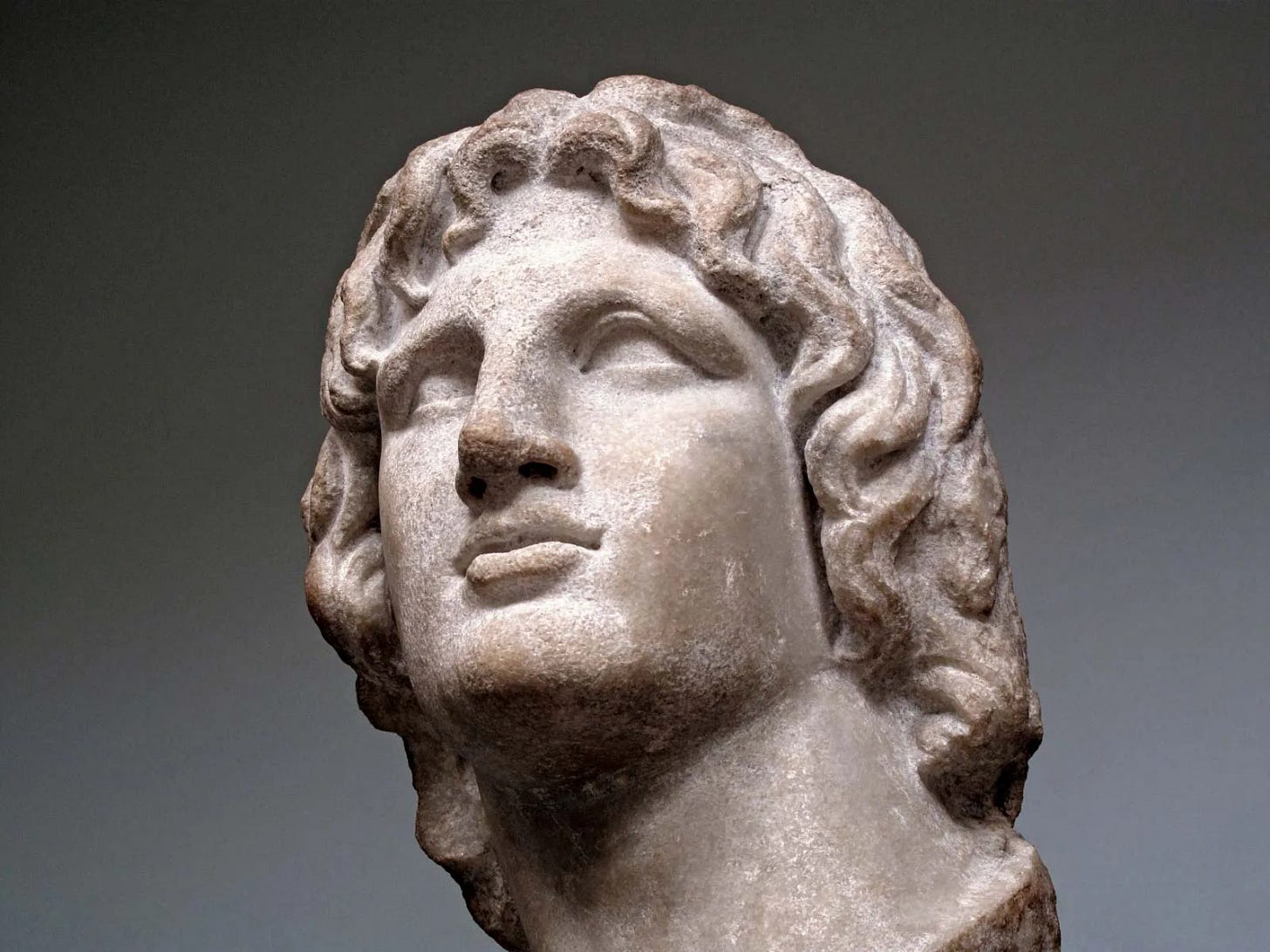In his Ages in Chaos series of books, Immanuel Velikovsky proposed that Dynasty 20 of Egypt was contemporary with the Achaemenid Persian Empire, and chronicled the wars of Nectanebo I and II against the Persians.
Rameses VII as Alexander the Great
One apparent weakness of Immanuel Velikovsky’s theory of Dynasty 20 is that if Rameses VI was Nectanebo II, then who were Rameses VII, son of Rameses VI, and Rameses VIII, alleged to be the son of Rameses III? These two kings appear to have ruled immediately after Rameses VI.
In Velikovsky’s chronology, the Persians reconquered Egypt, and Nectanebo II/Rameses VI fled away to the south. We would expect that Rameses VII must have ruled during the final 11 years of the Persian 31st Dynasty, or Rameses VII would have to be Alexander the Great. As it turns out, on closer examination, several points of evidence support the idea that Rameses VII was the Theban identity of Alexander the Great.
First, the throne name of Alexander the Great is known to have been Setep en Ra mery Amun. The throne name of Rameses VII is nearly identical, with the addition of the phrase “User Maat Ra”: User Maat Ra, setep en Ra, mery Amun.
Second, as reported by Diodorus, Plutarch, and Strabo, Alexander was told by the Oracle of Amun in Thebes that he was the divine son of the god Amun, which the Greeks considered the Egyptian equivalent of Zeus. Thus in taking a set of Egyptian titles, it would not be surprising if one of these alluded to that claim. The personal name of Rameses VII was Ramessu, ity Amun, heqa netjer Iunu, translated as “Ramesses, his father is Amun, god and ruler of Heliopolis.” There is no other Egyptian ruler known to have a personal name in this form.
Third, the highest attested year of Rameses VII was 8. Alexander conquered Egypt without a fight in the Autumn of 332 BC, but was not inaugurated as Pharaoh until the Spring of the following year, 331 BC. Unlike Babylon and Judah, which used accession years, Egyptian reigns were dated from the day of inauguration. Alexander died in June of 323 BC, which was 8 years from his inauguration as Pharaoh.
Fourth, there is little known about Rameses VII, except that grain prices soared in his reign. After being crowned as Pharaoh in the Spring of 331 BC, Alexander left Egypt in the hands of Cleomenes of Naucratis, who is recorded as having manipulated the price of grain, buying it at 10 drachmas but then selling it for 32 drachmas, and deliberately exacerbating shortages by cornering the grain market (Bevin 1927).
The unfinished tomb of Rameses VII names Rameses VI as his father. This would seem to contradict the notion that Alexander the Great could have been Rameses VII, as his father was Philip of Macedon. However, a fable called The Alexander Romance maintained that after fleeing Egypt from the Persian reconquest, Nectanebo II was a wizard who traveled to the court of Philip in Macedon and, as the incarnation of Amun, impregnated Olympias with Alexander. While this is dismissed as a late fable, given everything else we know about Alexander’s claim to be the son of Amun, the Alexander Romance could very well have been propaganda created by Alexander’s Egyptian handlers to legitimize his reign in the eyes of the Egyptians. The claim that Rameses VI (Nectanebo II) was the father of Rameses VII (Alexander the Great) is entirely consistent with this possibility.
Lastly, the tomb of Rameses VII was left incomplete. We know that Alexander’s body was intercepted by Ptolemy I, who interred it in Alexandria, where he could keep an eye on the tomb. The reason for this was that in the Macedonian culture, the possession of and piety towards his predecessor’s body was one of the proofs of the legitimacy of the successor’s claim to the throne. The choice to bury Alexander in Alexandria brought an end to seven centuries of burials in the Valley of Kings.
In summary, the possibility that Rameses VII was Alexander the Great is supported by the nearly identical throne name, the personal name as the son of Amun, the Alexander Romance which names Nectanebo II as the father of Alexander, the spike in grain prices in the reigns of both Rameses VII and Alexander, the length of reign, and the cancellation of the tomb in Kings Valley.
This leaves a question of when Rameses VIII reigned. This king left no tomb, but a stele claimed he was the son of Rameses III (Nectanebo I). Rameses VIII may have briefly pretended to the Egyptian throne during the final 11 years of the Persian reconquest of Egypt prior to Alexander’s arrival in 332 BC. Like as not, the Persians decided they had had enough of Egyptian kings and killed him.




Love this!
o might, time permitting, look at this.